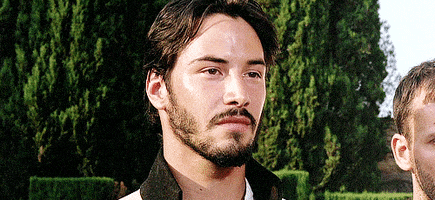 Kenneth Branagh’s 1993 film, Much Ado About Nothing is an enthusiastic and boisterous retelling of Shakespeare’s comedic play. The film uses dramatic gesturing and a soundtrack that perfectly characterizes the emotions and tone Branagh seeks to convey in each scene. These tactics leave little for the audience to further imagine or interpret for themselves. With the dramatic and emphasized performances of Beatrice by Emma Thompson and Benedick by the director himself, the ‘love is more powerful than all’ message of this film is effectively stressed. This message is further highlighted by the contrasting lackluster performance of Keanu Reeves as Don John, the self-proclaimed villain. This blog examines Branagh’s stress on certain aspects in the film and de-emphasis on others, as he effectively portrays a brilliantly vivid, albeit tell all interpretation of Much Ado About Nothing.
Kenneth Branagh’s 1993 film, Much Ado About Nothing is an enthusiastic and boisterous retelling of Shakespeare’s comedic play. The film uses dramatic gesturing and a soundtrack that perfectly characterizes the emotions and tone Branagh seeks to convey in each scene. These tactics leave little for the audience to further imagine or interpret for themselves. With the dramatic and emphasized performances of Beatrice by Emma Thompson and Benedick by the director himself, the ‘love is more powerful than all’ message of this film is effectively stressed. This message is further highlighted by the contrasting lackluster performance of Keanu Reeves as Don John, the self-proclaimed villain. This blog examines Branagh’s stress on certain aspects in the film and de-emphasis on others, as he effectively portrays a brilliantly vivid, albeit tell all interpretation of Much Ado About Nothing.
The Musical style of Branagh’s film plays the role usually assumed by the chorus in many of Shakespeare’s plays. As was brought up in class, both the chorus and the music in a production are used to help give context and set the tone for a scene. The scene that follows Benedick and Beatrice overhearing stories of the other professing love is a great example of the strong narrative voice music provides in Branagh’s film. The scene cuts between Beatrice swinging up and down with a blissful expression and Benedick joyously dancing in a fountain while triumphant music plays overhead. The music is being repeated from an earlier scene of the men riding triumphantly on their horses. In combination with the dissolving shots of Beatrice and Benedick flying up above the landscape in celebration, the music of the scene demonstrates the transcendent, uplifting quality of love. Other themes are repeated through music as well with the tunes of the opening reoccurring in the middle and the end in scenes of harmonious celebrations of love.

While the music sets a tone of lighthearted romance, the comedic flair and high energy of the film is cemented through dramatic hand gestures and body movements. Michael Keaton’s loveably doltish performance of Dogberry has him pretending to ride a horse with hand motions while Denzel Washington makes a comedic gesture of a bird flying when making fun of Benedick. Branagh and Thompson also make dramatic hand gestures during their speeches to maintain the liveliness of the film and help with scene interpretation.

As the movements of the film create an atmosphere of lighthearted comedy, the contrasting performances of the leads emphasize its intended themes. Branagh emphasizes Benedick and Beatrice making them the focal points while Robert Sean Leonard as Claudio and Kate Beckinsale as Hero are simply supporting characters. This is evidenced not only by Beckinsale’s more subtle delivery of her lines but also Branagh’s decision to cut out text from the play. He cuts part of a scene in which Hero expresses her nervousness on her wedding day and reacts with moral outrage to Margaret making a crude sexual reference (Shakespeare 3.4.22-33). In the film Hero has almost no dialogue that pertains to her own feelings or thoughts. Claudio is played much like Hero and lacks the dynamism of Beatrice and Benedick except in the wedding scene when he thinks that Hero has betrayed him. In contrast with these performances, Branagh and Thompson play their characters with a loud charisma that romances and dominates. The emphasis on Beatrice and Benedick highlights Branagh’s interpretation that love is all powerful as Benedick’s storyline centers around him being doubtful and wary of love. His doubts and wariness are vanquished by love’s power.

Branagh’s interpretation of love in the film is also supported by Keanu Reeves’ portrayal of Don John the villain. The scene where Don John expresses his anger towards Don Pedro and company is subtle and underwhelming. Reeves’ uses a quiet and expressionless tone in comparison to other actors in the film. This contrasts well with Claudio’s loud and tangible anger when he thinks Hero has betrayed him. Don John is also shown being massaged by Conrad during this scene compared to Claudio’s scene where he is shown pushing Hero violently and destroying the wedding ornaments. Reeves’ portrayal and the setting choice lends to the idea that evil is a weak opponent that is no match for love’s overwhelming potency!

Branagh’s Much Ado About Nothing does not ask the audience to question, but provides vivid and concrete answers to how one should feel upon viewing each scene. It stresses the lighthearted aspects and downplays the more sinister ones. The result is that the film maintains a comedic atmosphere true to Shakespeare’s original work, while portraying a strong interpretation of simply basking in the overwhelming splendor of love.

By Jennifer Pelham
Works Cited
Much Ado About Nothing. Dir. Kenneth Branagh. 1993. Film.
Shakespeare, William. Much Ado About Nothing . Modern Library, 2007. Print.
Leave a Reply
You must be logged in to post a comment.